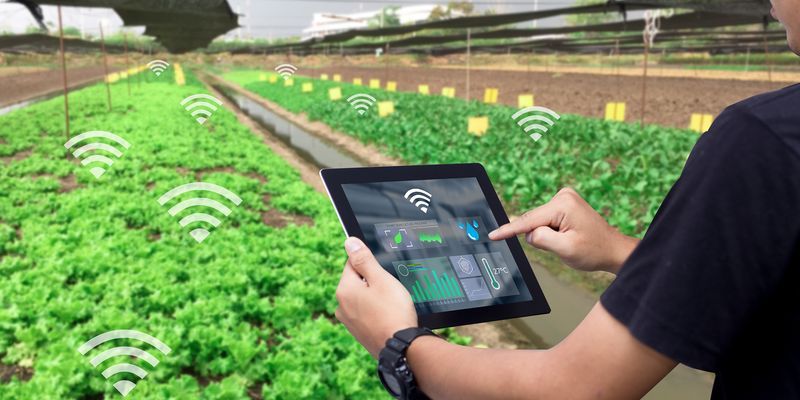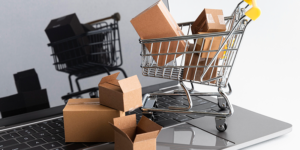
The agricultural sector faces a relentless barrage of risks. Unpredictable weather patterns, pests, fluctuating market prices, and resource scarcity are only a few of the challenges the sector grapples with every season.
In this dynamic environment, innovation is key to ensuring food security and maximising yields. The Internet of Agricultural Things (IoAT) has emerged as a powerful tool for risk management, transforming how farmers and agribusinesses monitor, analyse, and react to potential threats.
IoAT is an extension of the Internet of Things (IoT), specifically designed for the agricultural sector, which utilises a network of interconnected devices to collect real-time data from agricultural environments.
These devices, including sensors, drones, and weather stations, gather information on various parameters like soil moisture, temperature, humidity, and plant health. The collected data is transmitted wirelessly to a central platform for processing and analysis, which allows growers to gain a comprehensive understanding of their fields, enabling them to make informed decisions for optimal crop production.
IoAT’s impact on agricultural challenges is multifaceted. One key area is combating climate challenges. IoAT weather stations provide real-time data on temperature, rainfall, and wind speed.
Armed with this knowledge, growers can anticipate droughts, floods, and extreme weather events. This foresight allows them to implement proactive measures like adjusting irrigation schedules to conserve water during droughts or deploying frost protection systems to shield crops from unexpected freezes.
.thumbnailWrapper{
width:6.62rem !important;
}
.alsoReadTitleImage{
min-width: 81px !important;
min-height: 81px !important;
}
.alsoReadMainTitleText{
font-size: 14px !important;
line-height: 20px !important;
}
.alsoReadHeadText{
font-size: 24px !important;
line-height: 20px !important;
}
}

Similarly, they can schedule harvests before storms hit, minimising potential crop losses. IoAT also plays a vital role in precision irrigation. Soil moisture sensors monitor the water content in the ground, allowing for precise irrigation based on actual needs. It not only conserves water but also prevents crop stress and disease caused by overwatering.
IoAT also helps minimise pest and disease outbreaks. Sensors can detect subtle changes in plant health, such as variations in leaf temperature or spectral reflectance.
Early detection is crucial, allowing for targeted interventions like applying organic pesticides or introducing beneficial insects before the infestation spreads. It minimises the spread of pests and diseases, ultimately reducing crop losses.
Additionally, drones—equipped with sensors and cameras—can map fields and pinpoint areas with pest infestations, allowing for targeted application of pesticides, minimising environmental impact and optimising resource use by focusing on areas that truly need intervention.
Beyond risk management, IoAT offers a range of additional benefits. It streamlines farm operations by automating tasks like irrigation and fertigation (combining irrigation with fertiliser application). This frees up valuable time for each stakeholder engaged in the agriculture value chain to focus on other critical aspects of their business, such as planning crop rotations, exploring new market opportunities, or managing finances.
Additionally, IoAT enhances traceability. Sensors can track crops throughout the supply chain, providing valuable data on origin, storage conditions, and transportation. This transparency fosters trust among consumers who are increasingly interested in the source of their food and how it was produced.
Farmers and agribusinesses, who can demonstrate sustainable practices and responsible use of resources, can command premium prices for their produce.
Finally, IoAT generates a wealth of historical and real-time data, allowing them to leverage data analytics for informed decision-making. It empowers them to optimise planting schedules based on past yield data and weather patterns, select the most suitable crop varieties for their specific soil conditions, and predict future yields with greater accuracy. This data-driven approach allows for better resource allocation and, ultimately, contributes to increased profitability.
.thumbnailWrapper{
width:6.62rem !important;
}
.alsoReadTitleImage{
min-width: 81px !important;
min-height: 81px !important;
}
.alsoReadMainTitleText{
font-size: 14px !important;
line-height: 20px !important;
}
.alsoReadHeadText{
font-size: 24px !important;
line-height: 20px !important;
}
}

While IoAT offers significant benefits, there are challenges to consider. The initial investment in sensors and data infrastructure can be substantial, particularly for small-scale farmers with limited resources.
Additionally, ensuring reliable internet connectivity in rural areas is crucial for effective data transmission. Without a strong and stable connection, the collected data may not be transmitted in real-time, hindering the effectiveness of IoAT solutions.
Furthermore, users may require training to understand and utilise the data generated by IoAT systems effectively. Data analysis can be complex, and they may need support in interpreting the information and translating it into actionable insights for their farms.
Despite these challenges, IoAT is rapidly transforming the agricultural landscape. As technology advances, sensor costs are expected to decrease, and connectivity solutions will improve, making IoAT more accessible to a wider range of farmers and agribusinesses.
Additionally, government initiatives and public-private partnerships can play a crucial role in promoting IoAT adoption among small and marginal farmers. These initiatives can bridge the financial gap and empower small-scale farmers to leverage the power of IoAT by providing subsidies, training programmes, and facilitating access to credit.
Overall, IoAT empowers farmers and agribusinesses with the tools to manage risk, optimise resource utilisation, and make data-driven decisions. IoAT has the potential to revolutionise the way we grow food, ensuring food security for a growing population while minimising environmental impact.
As technology continues to evolve and becomes more accessible, IoAT is poised to play a transformative role in the future of agriculture.
Sanjay Borkar is the Co-founder and CEO of FarmERP.
Edited by Suman Singh
(Disclaimer: The views and opinions expressed in this article are those of the author and do not necessarily reflect the views of YourStory.)










